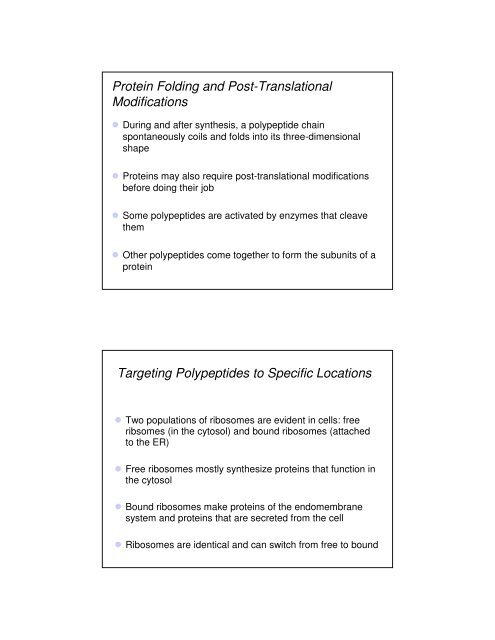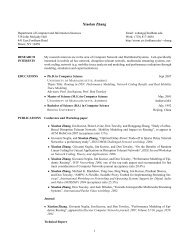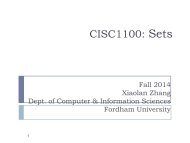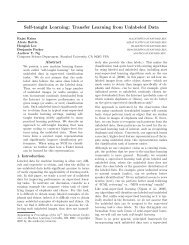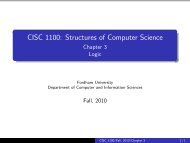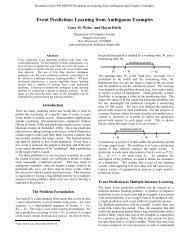Basic Principles of Transcription and Translation - Computer ...
Basic Principles of Transcription and Translation - Computer ...
Basic Principles of Transcription and Translation - Computer ...
Create successful ePaper yourself
Turn your PDF publications into a flip-book with our unique Google optimized e-Paper software.
Protein Folding <strong>and</strong> Post-<strong>Translation</strong>al<br />
Modifications<br />
During <strong>and</strong> after synthesis, a polypeptide chain<br />
spontaneously coils <strong>and</strong> folds into its three-dimensional<br />
shape<br />
Proteins may also require post-translational modifications<br />
before doing their job<br />
Some polypeptides are activated by enzymes that cleave<br />
them<br />
Other polypeptides come together to form the subunits <strong>of</strong> a<br />
protein<br />
Targeting Polypeptides to Specific Locations<br />
Two populations <strong>of</strong> ribosomes are evident in cells: free<br />
ribsomes (in the cytosol) <strong>and</strong> bound ribosomes (attached<br />
to the ER)<br />
Free ribosomes mostly synthesize proteins that function in<br />
the cytosol<br />
Bound ribosomes make proteins <strong>of</strong> the endomembrane<br />
system <strong>and</strong> proteins that are secreted from the cell<br />
Ribosomes are identical <strong>and</strong> can switch from free to bound


